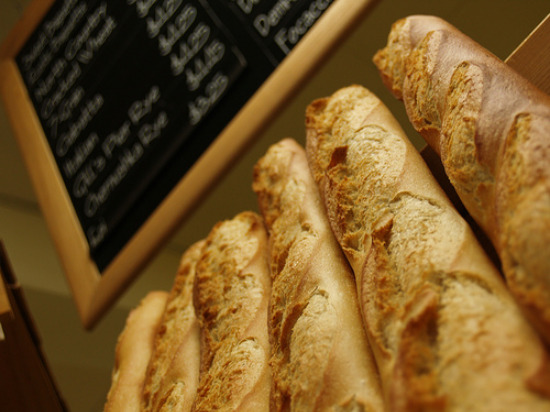Two seagulls are fighting for a piece of bread. The first bird overpowers the second bird, quickly snaps of up the bread, tastes it, then immediately spits it out. Looking astonished, the second bird says, “Why did you spit out that perfectly good piece of bread?” The first bird replies, “It’s not whole-grain.”
Last night, I ran out to the grocery store to pick up a loaf of whole-grain bread. Unfortunately, it was nearly 9 PM and all of the fresh whole-grain bread was gone or had been hardened from sitting out all day. Against my better judgement, I settled for two medium size loaves of French bread straight from the baker’s oven.
Back in the Wonder Bread day, I would be happy as a clam to get fresh French bread. But these days, I should know better. French bread, although soft and tasty, is essentially white bread, full of “bad carbs” and not much nutrients. Besides, you’d have to be living in some remote village to not know that whole-grain bread is better for you than bread made with refined grains (white flour). On a side note, I had a sixth grade teacher who was way ahead of the times – he often told our class that eating white bread (aka Wonder Bread) was no better for us than eating paper. I think we all consumed less paper after that.
Why whole-grain is better
Whole-grain bread is made with…well, whole grains. Unlike white bread, whole-grain bread hasn’t had its germ and bran – what gives the bread its fiber – removed by milling and processing. Although, slice by slice, whole-grain bread and white bread have approximately the same number of calories, whole-grain bread has 3 times the amount of fiber and 6 times the amount of protein. And by now, most of you know that eating foods that are high in fiber can aid digestion and help us lose weight because it keeps us feeling fuller longer.
Spotting a whole-grain
If you can’t tell a whole-grain bread from a white flour processed bread, have no fear! Look for the whole truth when trying to spot a whole-grain, fiber-rich bread. A true whole-grain bread (or any whole-grain product) will list whole wheat, whole oats, whole rye, or some other whole grain cereal as the first ingredient. According to the Mayo Clinic, if the label says “made with wheat flour”, the bread or product may be an intact grain product or it may just be an advertising gimmick, since even highly processed cake flour is made with wheat flour.
Choose Wisely, Choose Whole
So if you’re looking to add more whole-grain to your diet, look for the word “whole” on packaged bread and cereal products – whole grains should be listed as one of the first ingredients. As an extra bonus – go for products that have at least 3 grams of dietary fiber per serving.
Want to know more about whole grains and whole-grain products? Check out the Whole Grains Council.


You forgot to mention the fact that the germ and bran include the majority of the grains nutrients — with processing & removing of the bran and germ, you lose the vitamins too!
Hi Christy – I know! I forgot to mention about the nutrients. I realized it after I posted and then just didn’t go back to add it in. Hope you’re doing well 🙂